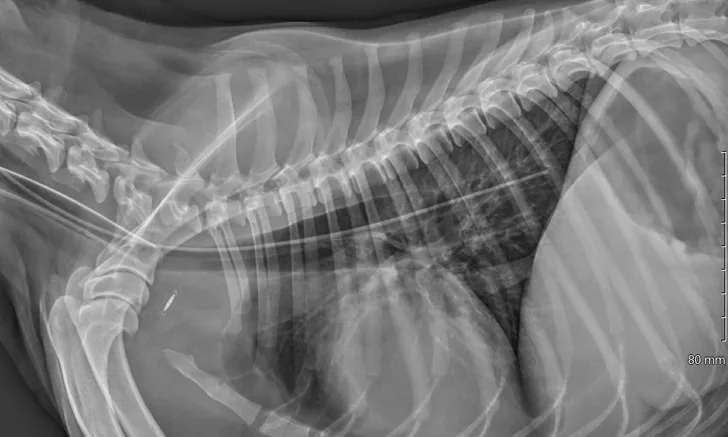Assisted Enteral Feeding in Dogs with Protein-Losing Enteropathy
Harry Cridge, MVB, MS, PG Cert Vet Ed, DACVIM (SAIM), DECVIM-CA, FHEA, Michigan State University

In the Literature
Economu E, Chang Y, Priestnall SL, Kathrani A. The effect of assisted enteral feeding on treatment outcome in dogs with inflammatory protein-losing enteropathy. J Vet Intern Med. 2021;35:1297-1305.
The Research …
Dietary management is a key therapeutic component in dogs diagnosed with protein-losing enteropathy (PLE)1; many dogs with PLE have hyporexia or anorexia.2 Guidelines for select enteropathies in humans suggest that feeding tubes (eg, nasogastric tubes) may be considered in cases in which oral enteral nutrition is not tolerated.3
This retrospective study evaluated whether assisted enteral nutrition (via nasogastric, esophagostomy, gastrostomy, or jejunostomy feeding tubes) improved outcome in dogs diagnosed with inflammatory PLE. Criteria for enrollment included serum albumin <2.8 g/dL, >3-week history of GI signs, exclusion of extra-intestinal disease (eg, protein-losing nephropathy, hepatic disease, hypoadrenocorticism, exocrine pancreatic insufficiency, pancreatitis), and histopathologic confirmation of inflammatory GI disease.
Medical records of 57 dogs were reviewed, and assisted enteral feeding was found to be significantly associated with a positive outcome in dogs that required both diet and immunosuppression management. Insufficient data were available to determine the effects of assisted enteral nutrition in dogs managed with diet alone. A positive outcome was defined as survival ≥6 months or death unrelated to PLE.
Many dogs that did not receive assisted-enteral feeding (47%) were hyporexic or anorexic. Previous experimental studies have shown that anorexia may lead to impaired intestinal immune function and a higher risk for bacterial translocation.4,5
Assisted enteral feeding was associated with a 14% complication rate, but this may have been underestimated due to lack of follow-up. The overall median survival time for dogs with PLE was 360 days (range, 0-3,766 days). Median survival time for dogs with assisted enteral nutrition was longer than for those without assisted enteral nutrition (559 vs 282 days). Prospective studies are needed to fully determine the effects of assisted enteral nutrition on dogs with inflammatory PLE.

Radiograph of a dog with an esophageal feeding tube placed in the distal third of the esophagus
… The Takeaways
Key pearls to put into practice:
Assisted enteral nutrition via a feeding tube may improve the outcome in dogs with inflammatory PLE. Pet owners should understand potential adverse effects associated with feeding tubes and their placement.
Almost 50% of the dogs in this study that did not receive assisted enteral nutrition were hyporexic or anorexic. Hyporexia or anorexia in patients with PLE may have adverse physiologic effects.
Dogs with PLE can have prolonged survival times with appropriate management.
You are reading 2-Minute Takeaways, a research summary resource presented by Clinician’s Brief. Clinician’s Brief does not conduct primary research.